For the last fortnight I’ve been working extremely hard on AI pathfinding and scheduling. It has been massively challenging – after two days searching for the conclusion to a single bug, only to discover that it was a single word misspelled in the 5000+ lines of AI behaviour code, something broke within me, and I need to take a break from the damned thing! So, for the last couple of days I’ve gone back to clothes and churned out all the remaining clothing for 0.8, and I feel intellectually rested enough to return to facing AI in the coming week. But back to clothing: nomads now have generated clothing, and tribal nations do as well, and these therefore now accompany the feudal clothing and the religious clothing styles that we have seen before. This entry will therefore talk about the nomadic clothing generation, the tribal clothing generation, and also small additions to feudal clothing to handle both lower-class and rulership-class variations in those clothing styles. With this done, almost all the graphics required for 0.8 are done, and it’s still just the pathfinding/scheduling stuff for important NPCs that needs finishing (as I say, I’m working hard on this in all my spare time at the moment, but it’s a huge task and by far the most intellectually challenging thing I’ve ever coded, without doubt). Anyway:
Nomadic Clothing
For nomadic clothing I wanted something fairly practical and rough-and-ready, but still visually interesting and distinctive, and something “modular”. The feudal clothing is less modular, in many ways, as there are clear archetypes that clothing will appear as a subset of, whereas for nomadic clothing I wanted to design it from the get-go to have more combinations – which is viable (unlike feudal) because it is a little less ornate, more pragmatic, and because you’ll simply see less of it in the average game, so you don’t have to “force in” quite as much variation in a single world generation. Each clothing generation selects three colour schemes, consisting of a plain colour (generally white, grey, some kind of pale brown), a pair of rich colours based on the flag of that nation (e.g. pink and purple, red and orange, blue and cyan, etc) and then a lighter version of the combination of those two colours (so a violet and red flag might wind up with a pale magenta as the third colour). Nomadic clothing is similar to the “robe” archetypes for feudal clothing, i.e. it takes up both the upper- and lower-body clothing slots when worn (unlike tribal clothing, as below) and consists of five layers – clothing shape, pattern shape, pattern pattern (you’ll get what I mean when you look at them), strap locations, and strap pattern, all combined with the various colour sets as described above. Here are some examples with illustrative flags that might be associated with the same nations, so you can see the colour-scheme similarity:
I’m really happy with how these came out! As you can see there, rather than two ranks – “normal” and “ruler” – that we have in the tribal clothes you’ll see below, there are three ranks here, each rank gaining an extra stripe. I actually really like this system as another visual way to denote rank within a single civilization. So, for example, normal people in a nomadic civilization get one stripe, people like merchants or caravan leaders or the ruler’s family and the like get two, whilst the ruler will be the only person to get three stripes. You’ll also notice the background fabric of these is simpler than the tribal clothing below; as above, I felt nomads should be a little more utilitarian than tribal people, and I thought the large blocks of colour on some of the nomadic designs actually worked really well, so I decided that I didn’t need to add in any more detail in that regard. Also, nomadic boots – quite a bit simpler than feudal ones, but distinctive and a little more colourful (as the clolthing styles of many real-world nomadic peoples often are), so I’m pleased with how these look (also, feudal ones tend to be more vertical whilst these flare out at the top more, which for some reason makes complete sense to me for nomadic footwear). The little buckle shape reflects the shape preference of the nomadic nation.
Tribal Clothing
Tribal clothing proved extremely challenging. From the get-go I’ve tried to emphasize relativism in URR, a lack of technological determinism, and so forth, but it is tricky to create “tribal” clothing styles that are intriguing and interesting, without them appearing “primitive”, but still acknowledging that a tiny (or at least, small) tribal nation will not have the technologies of their colossal feudal neighbour, for example. I also, of course, needed them to look very different from feudal and religious clothing, whilst still having enough variety that the clothing of one “tribe” will look nothing like another. After a lot of thought and several full days of trial and error, I’m very happy with the system I came up with. When I was doing the research for these styles I tried to find as many styles of dress used by ancient people that didn’t necessary look “primitive”, and that looked nice and varied. I looked for things like ancient Mesoamerican dress, ancient Egyptian clothing styles, and so forth, whilst accessories (necklaces, bracelets, etc) will appear in later releases. In the end I wound up with ten total possible “styles”, and three rankings of the technological sophistication of the tribal nation. For those with the greatest tailors you get something like the “high” one below – a thick background colour and lines running down it; for those with middling clothing technology (if there is such a thing) get a pale background with a coloured pattern and running lines, whilst “low” technology clothing has no lines and pale/dark pattern. You’ll also note the pattern becomes less dense each time – there are no tiles between the pattern in the left-most, a one-tile gap in the middle, and a two-til gap on the right. I also, of course, had to think about leadership signifiers. Just like religions use silver and gold thread to denote high rank (abbots, inquisitors, archivists, etc) and the highest possible rank (popes etc), and feudal nations will use gold thread for their rulers (see below), there are various signifiers of a leadership position in these clothes. They either have a number of patterned “discs” hanging on their front; a pattern down the middle of their clothing; or a bar that rests in the centre of their torso (the patterns on all of these also, of course, vary).
And here we have various lower-body permutations, which will be similar in colour and graphics to the above set (the colour is always dependent on the flag of the tribal nation in question, as with nomadic clothes). These were far, far trickier to create than the upper-body tribal garments (although that was also the case for feudal clothing) but I’m happy with what I’ve come up with, most of which are (broadly speaking) kinds of skirts/gowns. As above, the most technologically advanced tribal nations have their colours inverted for someone that looks much richer, whilst each rank creates background double-line patterns that get denser as you go up in technical ability. As with the upper body clothing, there are equivalent variations for lower-body, so when you view a Chieftain, for example, both their upper- and lower-body clothes will be very distinctive with the appropriate leadership signifier. Naturally in all of these pictures any shape could be of any technical level – to reiterate,the high/mid/low distinction only applies to the detail and complexity of the background pattern on the piece of clothing.
I also in the process of creating these figured out how I actually want tribal nations to function in the game, at long last! More on this much later when I get around to it, but suffice to say the existing tribal nations are very un-varied, and adhere to very comparable “technological levels”, and it would be far more interesting to create nations that might resemble the Mayans, or Babylonians, or Hittites, or Aztecs, or ancient Egyptians, and so forth. I’d like to expand “tribal” nations to mean more than just what we would now call tribal nations, but rather to encompass civilizations that are smaller and more self-contained and inward-looking, but vary vastly more than those currently spawning in the current version. Either way, this is a future project, but I’ve already had some very interesting ideas for how this could work. Oh, yes, and as for shoes, tribes either go barefoot or have some fairly simple sandal-type shoes, which I haven’t got around to making yet, but I’ll throw those together on a spare day sometime before release.
Class and Clothing
I’ve returned to the highest and lowest class statuses for standard feudal clothing. I didn’t want to create a special clothing set just for rulers because the player will so rarely ever encounter them (although rulers do get unique crowns and unique thrones!), but I wanted something to mark out “ruler clothing” from “upper class clothing”, so I’ve gone with a similar model to the “pope clothing” of adding a special colour of highlights to upper class clothes. Therefore, “ruler clothing” now looks like this, with some nice gold/orange/white trim which varies depending on the other colours of the clothing (however, if the ruler is of a theocracy and therefore also a pope/godking/archcleric/whatever, they default to the religious clothing). Examples:
Meanwhile, lower-class clothing wasn’t looking particularly impressive and needed a significant overhaul, since there is only so much brown one can look at. I tried to build up a decent library of “standard” colours that wouldn’t require any kind of serious wealth – whites, greys, browns, etc – and then I’ve tried to actually make them interesting (though I admit, this was tricky). Here are some instances of lower-class clothing types with the upper/middle equivalents for the same nation next to them:
There is still one final thing to do for the lowest-class clothing, which is to make certain archetypes even less ornate (though you can see that the buttons are smaller, the belts less patterned, etc), because the 1st and 2nd on that list, for example, are still a bit too snazzy. Although, with that said, I don’t want to make the most common kind of clothing too uninteresting to look at, so there’s a balance to be found between realism and variety. I’ve also made the variety of colours possible for lower-class clothing significantly greater than it originally was, and hopefully you can see that in the left-most column. I’ll update this image later in the week once I reduce the complexity of some of the designs!
Final Clothing Thoughts
I’m extremely pleased with how different all four forms of clothing are. I feel confident saying that although the styles within each vary very significantly, it’ll always be fairly apparent when looking at an unknown person’s clothing whether they are wearing feudal, nomadic, tribal or religious clothing (and the armour sets I intend to develop later this year will obviously be highly distinct again). Here’s a rather nice image of some compiled generated clothing which illustrates this point better than I can, and shows very nicely the massive range of clothing you can now find on all the people you meet in the world(s) of URR:
Next Up?
I’m very happy with how these are all looking, and with these finished all clothing except armour is done (though armour won’t appear until 0.9) so we’re done with clothing for now (at a later date I will also add gloves, necklaces, rings, crowns, etc – I am really looking forward to crown generation – but not for 0.8, and probably not 0.9). I’m now turning back to pathfinding and scheduling for the third week of work, and we’ll have a large update on this in a week’s time… hopefully with it completed, but we’ll see how it goes. The task remains massive, complex and challenging, and although I’m making progress, it’s a long way from done. If I don’t think enough scheduling and pathfinding is done by next week, I’ll probably post an interim update on some of the other small additions and changes I’ve been implementing into 0.8. Either way: see you then!
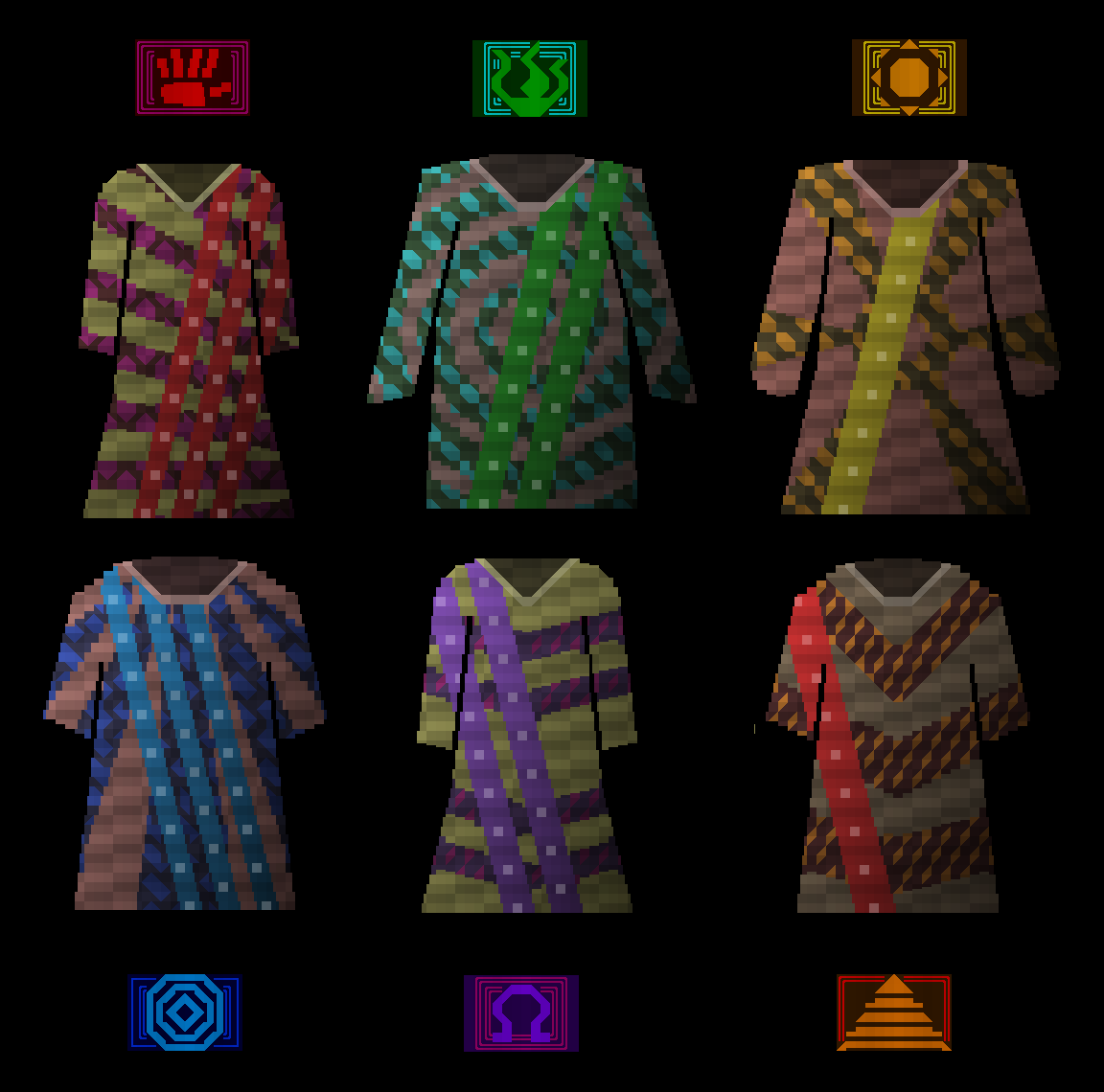

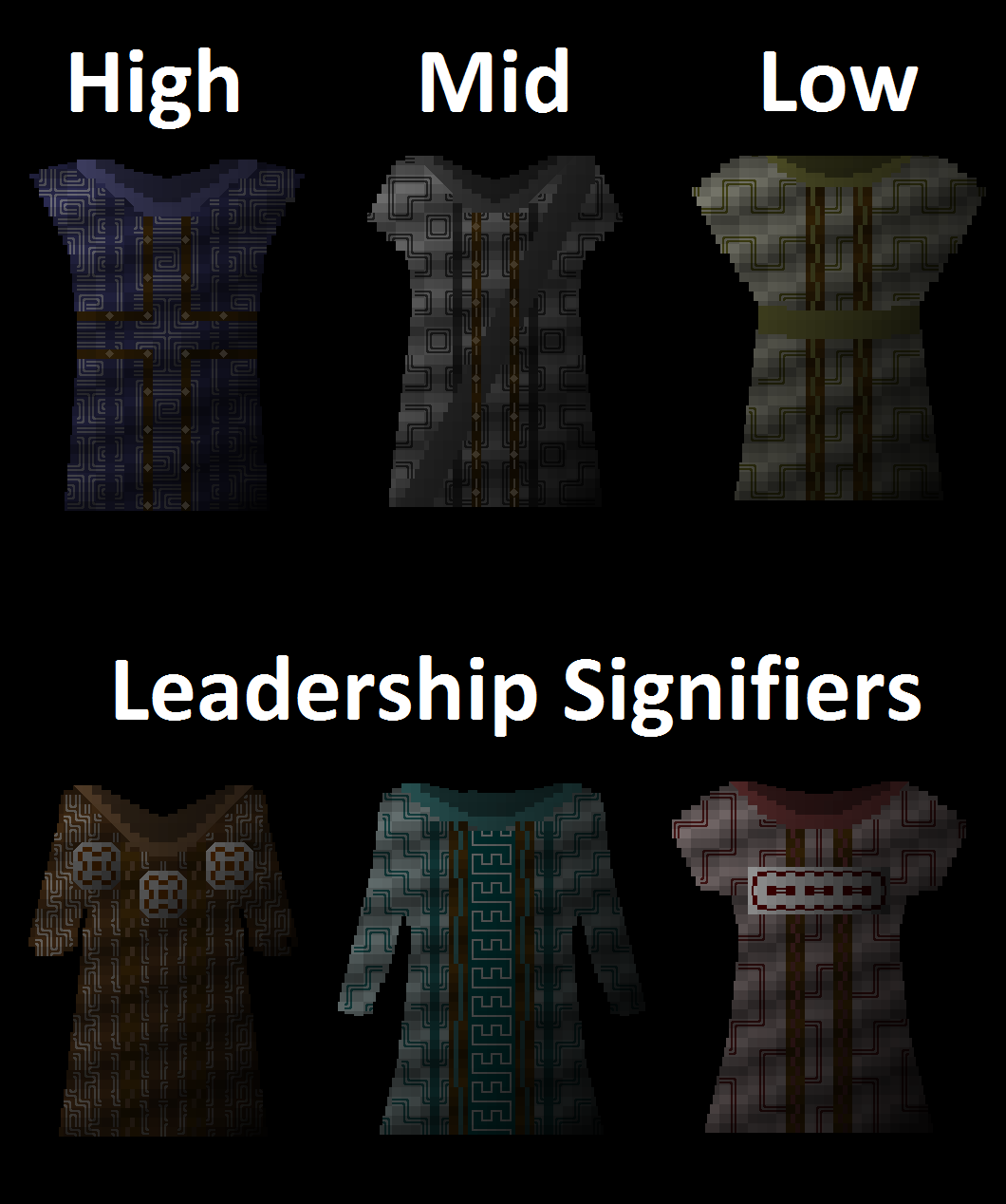
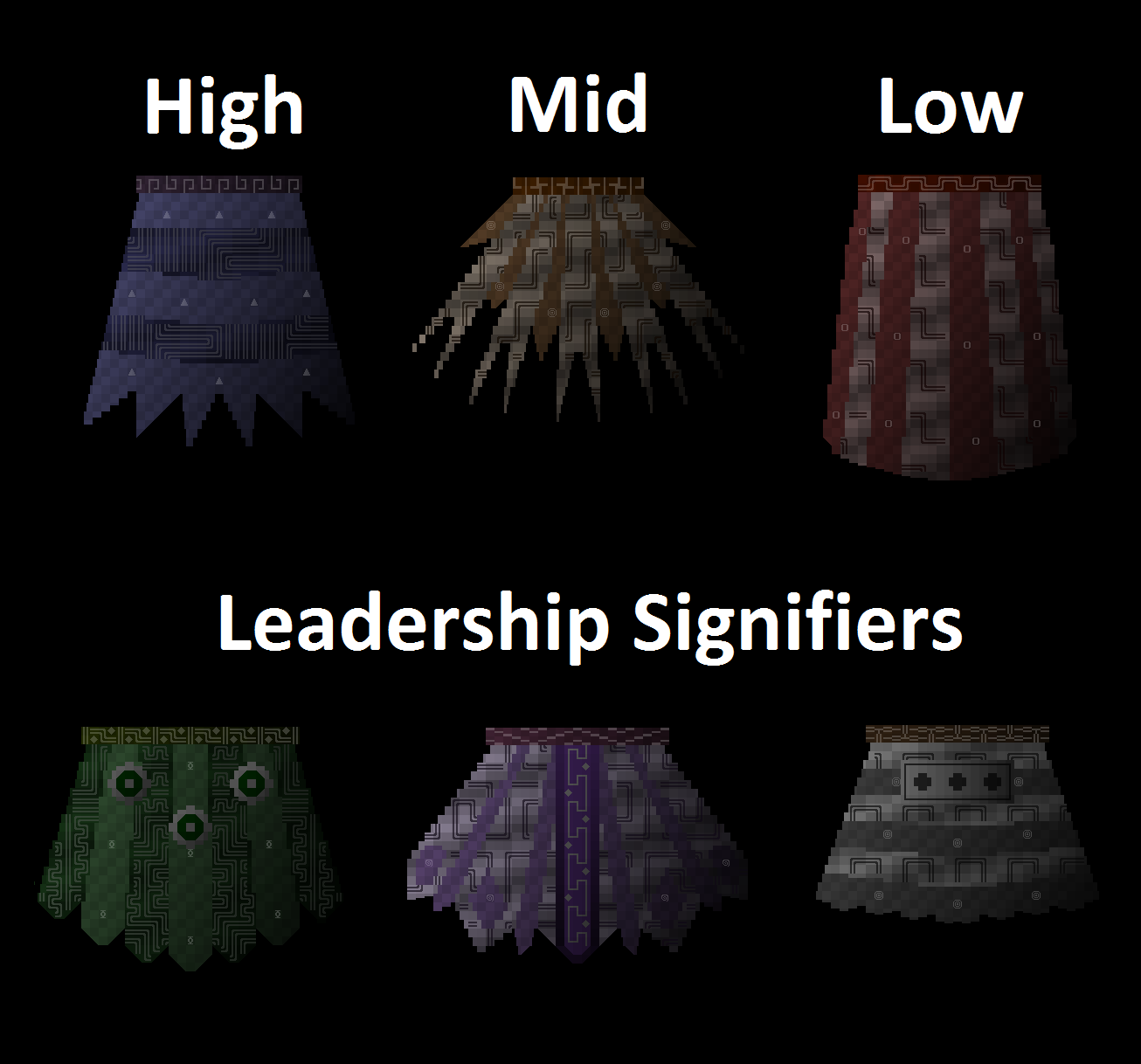
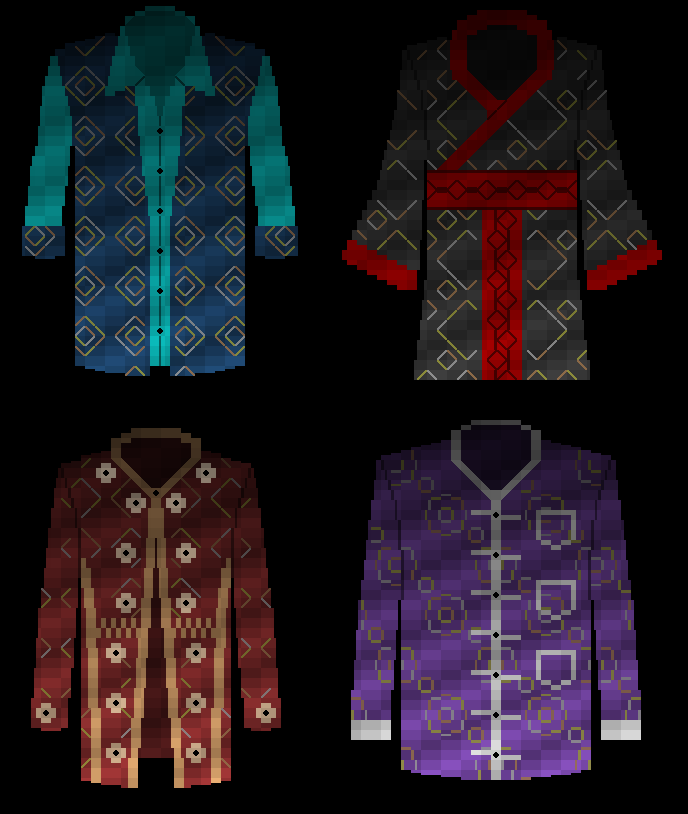
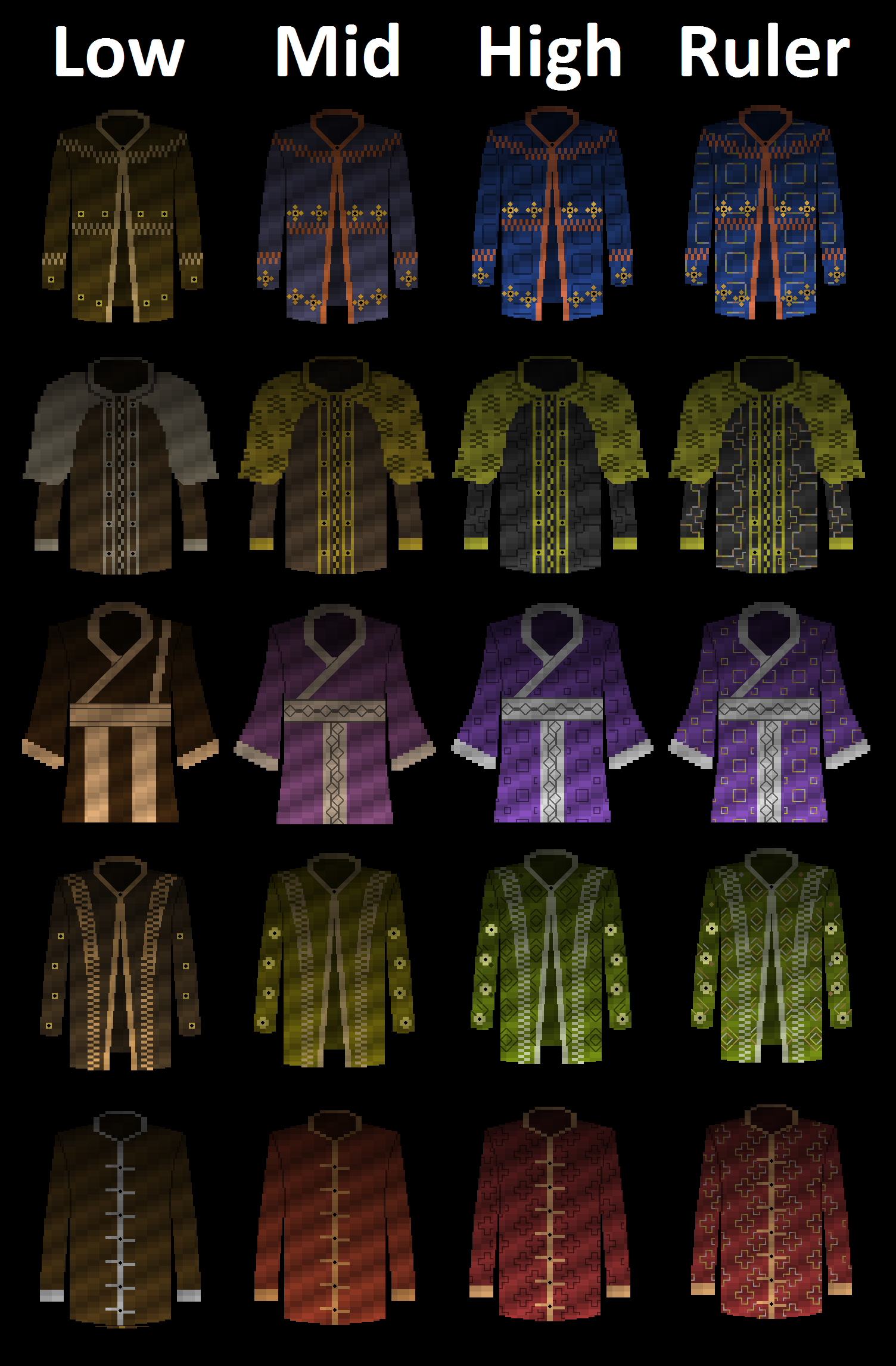
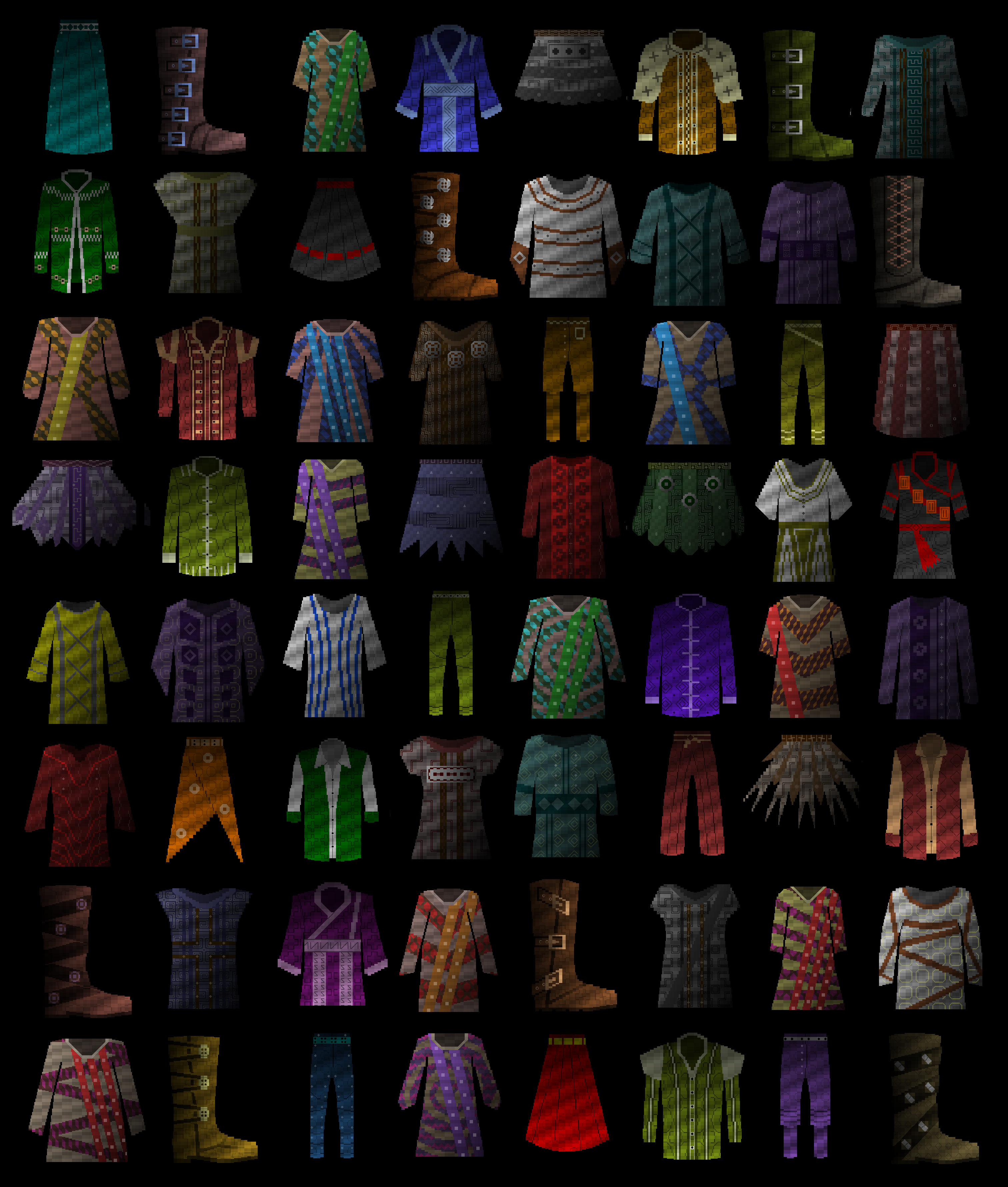

The clothes are looking pretty nice!, good work!
Thanks!